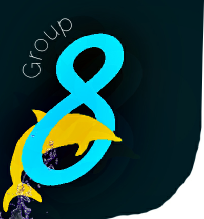
Falmouth Group 8

DISCLAIMER! This website does not necessarily reflect the views expressed by the National Oceanography Centre or any of its staff.
This sidescan was carried out using a GeoAcoustics 159 Digital Towfish (serial number
947) deployed from the back of MTO Viking, and data was recorded using Coda Octopus
software. At the transect start point, the unit was deployed from the back of the
boat, and was towed at a depth of 1m for 2km. At the end of the transect line, the
boat turned and continued the survey without removal of the unit from the water.
This transect procedure was repeated, giving 5 parallel transects. It is important
to note that MTO Viking is a converted Norwegian military landing craft, and used
asimo engines for propulsion. These units involve individual ‘pods’ where the props
are housed, and these can be rotated 360° around their axis to give increased maneuverability.
Unfortunately with the lack of rudder, these ‘pods’ are positioned just astern of
the boat, and so the prop-
Instruments and Methods
A video survey was carried out around the Bizzies located just outside of the Falmouth SAC, and the survey lines ran perpendicular to the sidescan transects. An underwater camera was mounted on a stabilising plastic frame, which was deployed by rope from the port side of MTO Viking. Footage was monitored and recorded in DVD format from the bridge, and the unit was raised and lowered by hand whenever a change in seabed topography was observed via the camera. Times and locations of each video survey were recorded on cards, and these are shown to the camera on deck at the beginning and end of each survey. Times of interesting or unusual events seen on the video stream were recorded for later analysis and identification. In total, three video transects were collected, giving 4.7GB of usable video data.
To create the habitat map, major boundaries between distinct seafloor textures were marked out on the side scan print out. Points were then marked along these boundaries in order to obtain relative coordinates, these were then plotted against the ship transects onto a plot created using Surfer. The video transects were then used to verify the interpretation of the side scan and complete the habitat map.

